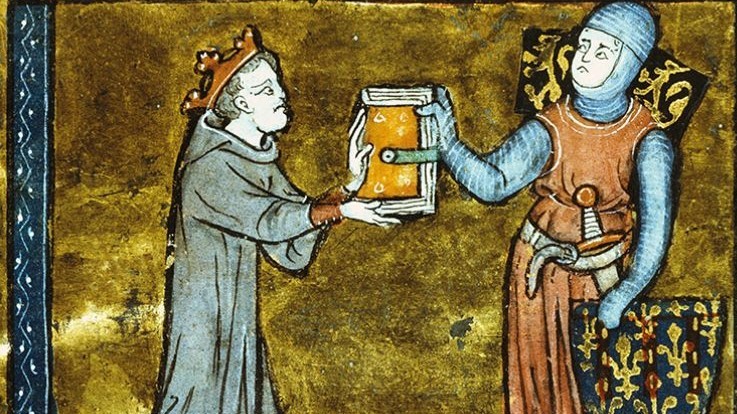Writing in this week’s Times Higher Education (August 29th) Kathryn Rudy, a senior academic at St Andrews University, counts the personal cost of her scholarly work in Art History.
“In academia, as everybody knows, it’s publish or perish. But it turns out that it’s also publish and perish: publishing, at least in my field of art history, leads to poverty. I am a full professor, fully employed, but I am contemplating getting a second job to support myself and my research. Paradoxically, the more successful I am, the poorer I get”.
“Here I want to address a few major systemic issues that art historians encounter. Although writing illustrated publications is widely acknowledged to be a key part of our job, and required by hiring and promotions committees, our universities do not adequately support these activities. In fact, universities expect us to absorb enormous costs”.
“I write about late medieval culture, manuscripts and their original functions, the structure and stratigraphy of manuscripts assembled over time, experimental shifts from manuscript to print, and forensic methods of detecting historical use of books. During my time at St Andrews, I have published six monographs, incorporating 1,215 images in all, and a seventh will appear in 2020 or 2021. I have also published 14 articles, which represent another 120 images, plus one article that had 84 images alone. I have therefore used a total of 1,419 images in books and articles that either can be or have been submitted to the research excellence framework by the university”.
“For the kind of work I do, it would be impossible to publish the ideas without having the images. The images form a dataset, a kind of proof that allows the reader to verify that what I am saying is true. Yet writing and publishing my books has cost me everything I have”.
Professor Rudy goes on to list eight kinds of costs involved in researching, illustrating and publishing them: Travelling to collections to undertake original research on medieval manuscripts; buying study photographs; paying registration, accommodation and travel fees to share research at conferences; buying high-resolution images for publication; paying for data storage; paying copyright fees; providing free copies of books; paying for production fees ( click here for details of these costs).
“As a result of all these costs, the more I publish, the poorer I am. After working at St Andrews for eight years, I own no property. I have no savings. My pension will be minuscule. Yet I have had to plough most of my disposable income back into research activities that have helped make the university shine. (The Principal’s Office asked me to supply a copy of Postcards on Parchment, as a showpiece or gift for a visitor.)”
“So what needs to be done? If universities actually desire (and reward with promotion) research in the humanities, they need to bring funding into line with costs. US institutions give their professors much more research funding. If we are to keep pace with them on a world stage, then we need more access to resources. I have expressed my willingness for years to work with development to raise money for these activities”.
“Image-holding institutions should rethink their purpose. They can never have enough in-house expertise to fully research all of their holdings. They should be grateful to scholars who are applying their expertise to their collections. The least they can do is to make images available for free. They should also allow researchers to make study photographs and produce high-resolution images for publication at low costs”.
“Digital publishing is simply the most efficient and cost-effective way to get ideas out into the world. We need to fully legitimate digital, online, peer-reviewed publishing and make it the norm. We need to create a world where young people will publish online, without fearing that it will harm their careers”.
“It sometimes seems to me that academic success is designed for people who are already wealthy, just as first-class seating in airplanes is designed for tall men. Underfunded humanities are an extension of unpaid internships and poorly paid fellowships in museums. Do we really believe that our disciplines are just a decoration and offer viable careers only to those with trust funds”?
Kathryn M. Rudy is professor of art history at the University of St Andrews. Her most recent book is Image, Knife, and Gluepot: Early Assemblage in Manuscript and Print(2019).
